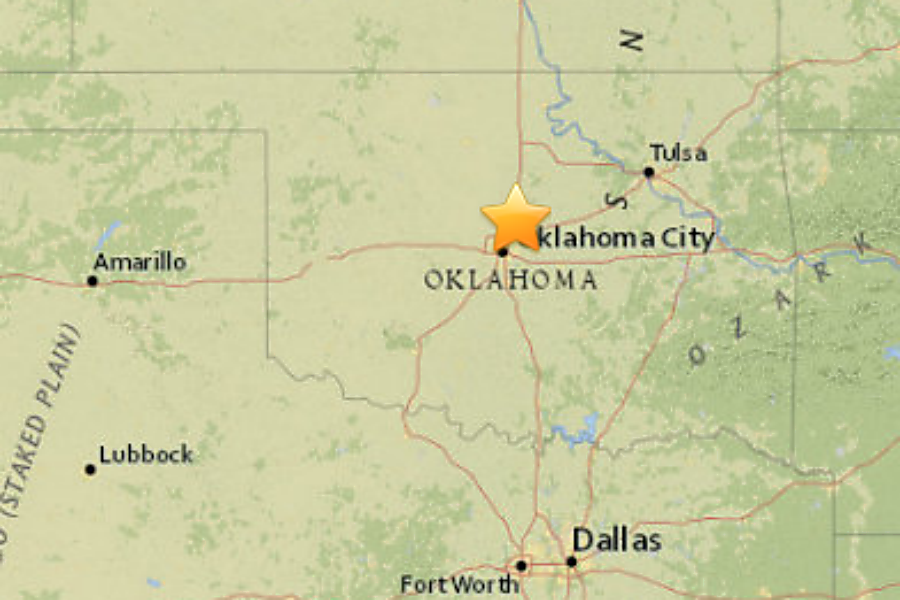Strong Oklahoma earthquake knocks out power to 4,400 homes
| Edmond, Okla.
A strong earthquake awoke many people in the Oklahoma City area early Tuesday.
There are no immediate reports of major damage, but the quake is blamed for power outages affecting thousands of people.
The U.S. Geological Survey says the quake had a preliminary magnitude of 4.3. The quake struck at 5:39 a.m. Tuesday with an epicenter 5 miles east-northeast of Edmond. A smaller earthquake with a preliminary magnitude of 3.4 hit the same area about 10 minutes later.
Edmond city officials say about 4,400 homes and businesses lost power because of the quake but electricity was restored quickly.
Oklahoma's uptick in earthquakes has been linked to the injection of wastewater underground from oil and gas production. State regulators have begun reducing the volume or shutting down disposal wells in response.
The Oklahoma Geological Society said earlier this year that it is "very likely" that most of the state's recent earthquakes were triggered by the subsurface injection of wastewater from oil and natural gas drilling operations, reported the Associated Press.
Geologists have been studying the cause of hundreds of earthquakes that have shaken the homes and the nerves of residents in central and north-central Oklahoma, where the pace of oil and gas drilling has accelerated in recent years.
A statement released by state geologist Richard D. Andrews and Dr. Austen Holland, state seismologist, said the rate of earthquakes and geographical trends around major oil and gas drilling operations that produce large amounts of wastewater indicate the earthquakes "are very unlikely to represent a naturally occurring process."
Geologists historically recorded an average of 1.5 earthquakes of magnitude 3 or greater each year. The state is now recording an average of 2.5 magnitude 3 or greater earthquakes each day, according to geologists.
The US Geological Survey says:
Most earthquakes in North America east of the Rockies occur as faulting within bedrock, usually miles deep. Few earthquakes east of the Rockies, however, have been definitely linked to mapped geologic faults, in contrast to the situation at plate boundaries such as California's San Andreas fault system, where scientists can commonly use geologic evidence to identify a fault that has produced a large earthquake and that is likely to produce large future earthquakes. Scientists who study eastern and central North America earthquakes often work from the hypothesis that modern earthquakes occur as the result of slip on preexisting faults that were formed in earlier geologic eras and that have been reactivated under the current stress conditions. The bedrock of Eastern North America is, however, laced with faults that were active in earlier geologic eras, and few of these faults are known to have been active in the current geologic era. In most areas east of the Rockies, the likelihood of future damaging earthquakes is currently estimated from the frequencies and sizes of instrumentally recorded earthquakes or earthquakes documented in historical records.






